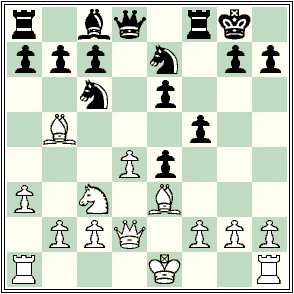It’s strange how the same move in the same position can have drastically varying meanings and interpretations in different games. The classic example is a sharp and startling innovation, successfully and tenaciously defended over the board and ending in a thrilling draw, producing one game that features the best of chess: resource, invention, drama and tension. But if we saw the same move played in the same position a year later, after worldwide exhaustive analysis of the first game, we’d suspect the player of tacitly offering a quick known draw, and our worst suspicions would be confirmed if the players proceeded to rattle off the same continuation as the first game, with a quick handshake. Not the same thing at all–even though the moves are exactly the same.
One of the most solid and reliable ways for White to bypass the critical main lines of the Winawer is 4. Ne2. For much of its history this heralded a quieter, positional game in the then main line 4. … dxe4 5. a3 Be7: still an acceptable defence for Black, though without many positive prospects. More recently the most popular defence has been 4. … Nc6!?, leading to positions that have been described as ‘more French in nature’ and with more prospects for both players to play for a win.
 But at the beginning, 4. Ne2 was seen as a gambit. Though it’s known to be too risky to accept it immediately via 4. … dxe4 5. a3 Bxc3+ 6. Nxc3 f5?!, the alternative 6. … Nc6! leads after 7. Bb5 Ne7 8. Bg5 f6 9. Be3 0-0 10. Qd2 f5 to the diagrammed position, a true gambit.
But at the beginning, 4. Ne2 was seen as a gambit. Though it’s known to be too risky to accept it immediately via 4. … dxe4 5. a3 Bxc3+ 6. Nxc3 f5?!, the alternative 6. … Nc6! leads after 7. Bb5 Ne7 8. Bg5 f6 9. Be3 0-0 10. Qd2 f5 to the diagrammed position, a true gambit.
This position is still debated; Vitiugov and Watson give differing analyses in their recent books. For decades the line was considered a little dubious for Black. But the theory manuals ignored the first known example of the diagrammed position, a consultation game involving Lasker, played in Washington, D.C., in January 1938, illustrating the best defence for Black.
The full details and an evaluation of the latest theory are in the latest issue of The New Winawer Report, which was posted on the tNWR page on Tuesday.
